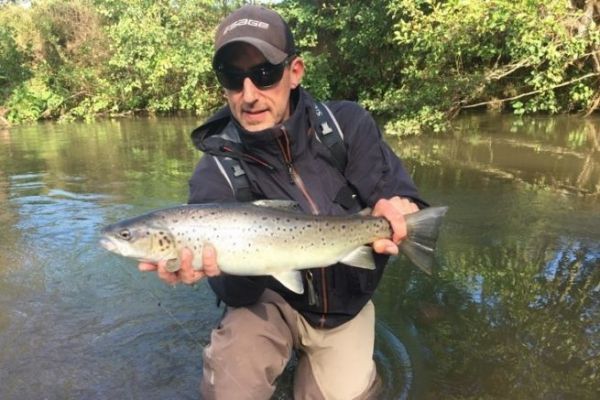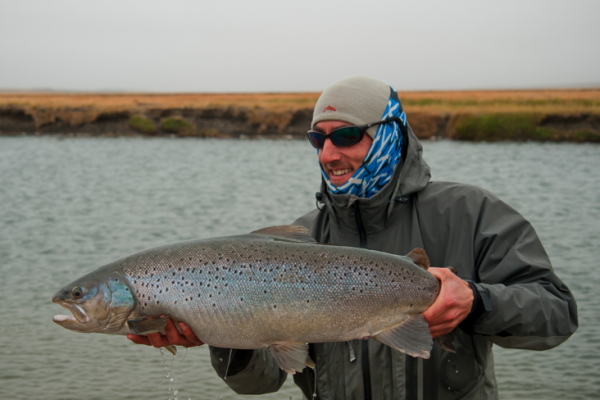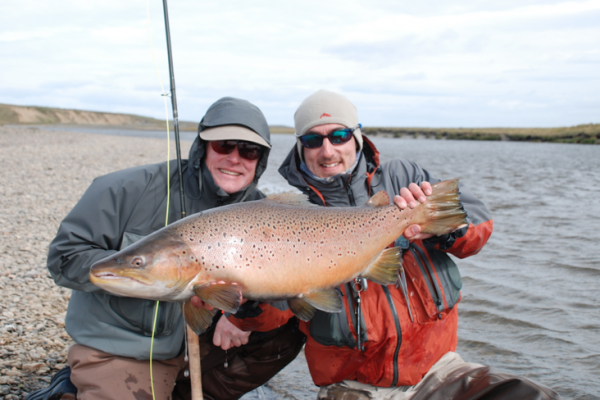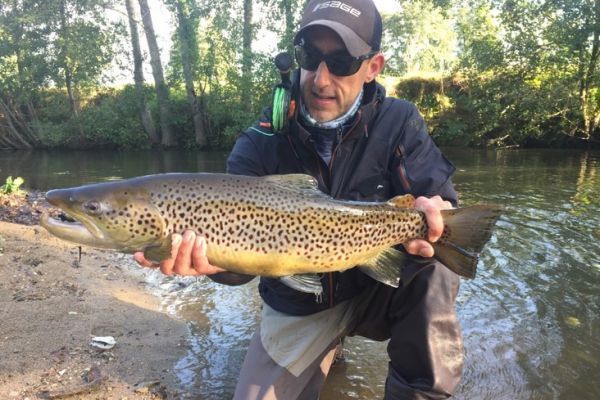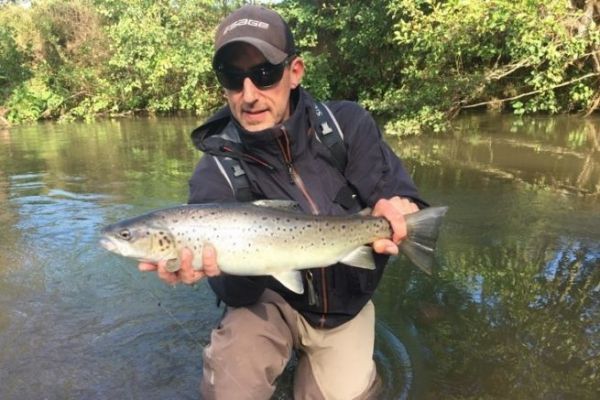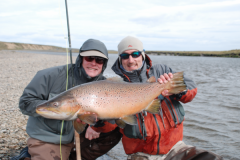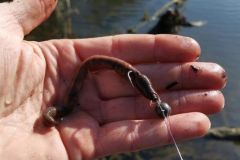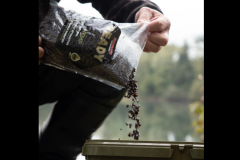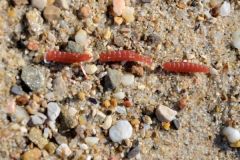Gaël Even, master of the house
For many years Gaël Even, a fishing guide friend and equipment designer/adviser for various lure fishing brands, has been actively seeking out the sea trout of the Touques. He stalks them with lures mainly in the evenings, but also practices fly fishing, notably with a technique he has modified in his own way to fish in deep holes: the indicator nymph.
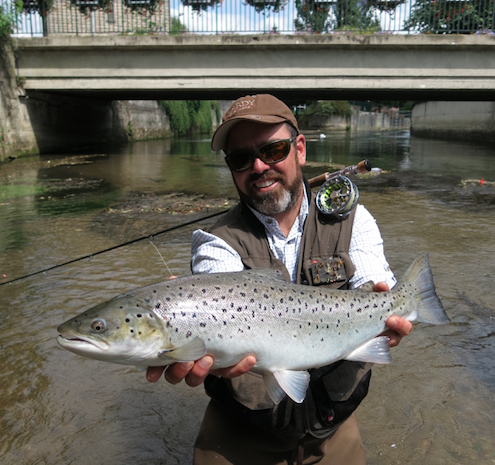
I've been able to test this approach with him since 2014 and it's true that it works really well on sea trout. Thanks to him, I was able to catch my first beautiful French sea trout after my experiences in Argentina.
He frequents the banks of this incredible river, which he knows like the back of his hand, where he can tell you the depth of each hole, and the behaviour of the sea trout that seem to post up on very specific spots.
With lures, fishing is often done with swimming fish, which have a way of annoying beautiful subjects and triggering bites.
Nymphing is a finer type of fishing that he regularly uses, catching brown trout, grayling and beautiful sea trout when well mastered.

Nymph fishing, a formidable technique
Gaël uses a nymph fishing technique inspired by the one used in the USA when you want to fish in strong currents and deep holes, especially when (resident) trout shun the surface in cold water.
The technique consists in mounting a floating indicator (made of foam), adjustable (to fish at different water heights), to support a well weighted nymph, which must quickly reach the bottom to fish and then move as close as possible to the fish.
Sea trout are often to be found in deep, dark pools during the day, only to emerge and climb the riffles (pool heads and tails) in the evening.
During the day, nymph fishing is often the most effective. Indeed, even at a certain depth and with a steady current, the nymph, weighted with a tungsten bead (often 3 to 4.5), can quickly sink to the bottom and interest the often aggressive sea trout. On the Touques, chartreuse and UV colors work very well and Gaël was soon able to test different models and see what attracts local sea trout the most.
Since my first experience with Gaël, with a friend Lionel we've gone there almost every year and juggled between the various techniques, but the indicator nymph is really effective when the sea trout are on the bottom and reluctant to go up on a drowned fish or tube fly. This is undeniable day fishing, whether you like it or not. Indeed, casting a leader with a big indicator and a very heavy nymph is not very pleasant. It's a far cry from the aesthetics and grace of fly casting, but sometimes you have to resign yourself to catching nice sea trout! However, the drift must be perfect and at exactly the right depth, otherwise the fish won't be interested at all. This is where Gaël's talent makes all the difference.
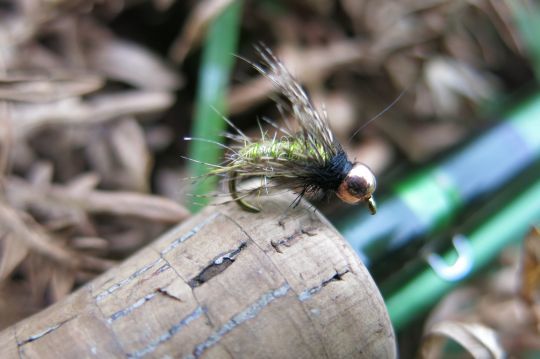
Line nymphing is used on more "rugged" spots to hug the bottom and catch fish in fast-moving currents. It is less widely used, but allows aficionados of this technique to catch fario and grayling as well.
Drowned-water and tube fly fishing in the evening
When the light is lower, be it in the morning, but especially at the end of the day and until nightfall (some rivers allow you to fish 2 hours after sunset), drowning and fly tube fishing can also produce beautiful sea trout.
Traditional sea trout fishing is done with drowned trout both in France and across the Channel. In fact, some purists only fish with floats and shun nymph fishing. In my humble opinion, it's important to adapt and modernize techniques, and to be able to use the full range of techniques depending on the conditions.

For drowned flies, it's possible to use the same patterns as for indicator nymphs, but on straight hooks (often size 12 to 10), but there are some traditional patterns that can't be ignored, and every river has its own preferences. Salmon drowned flies also work with dominant blacks. Combined with blue in clear water, orange and yellow in tinted water, drowned flies are effective when sea trout are aggressive, which often happens when they are rising, and then on the stroke of water when they are moving.
Personally, I've tested the Argentine sea trout flies I used on the famous Rio Grande on several occasions, and sometimes the weighted drowned flies with plastic legs work and trigger the sea trout.
As you can see, it's important to adapt and vary your sea trout fishing techniques according to the season, the time of day and your mood!
